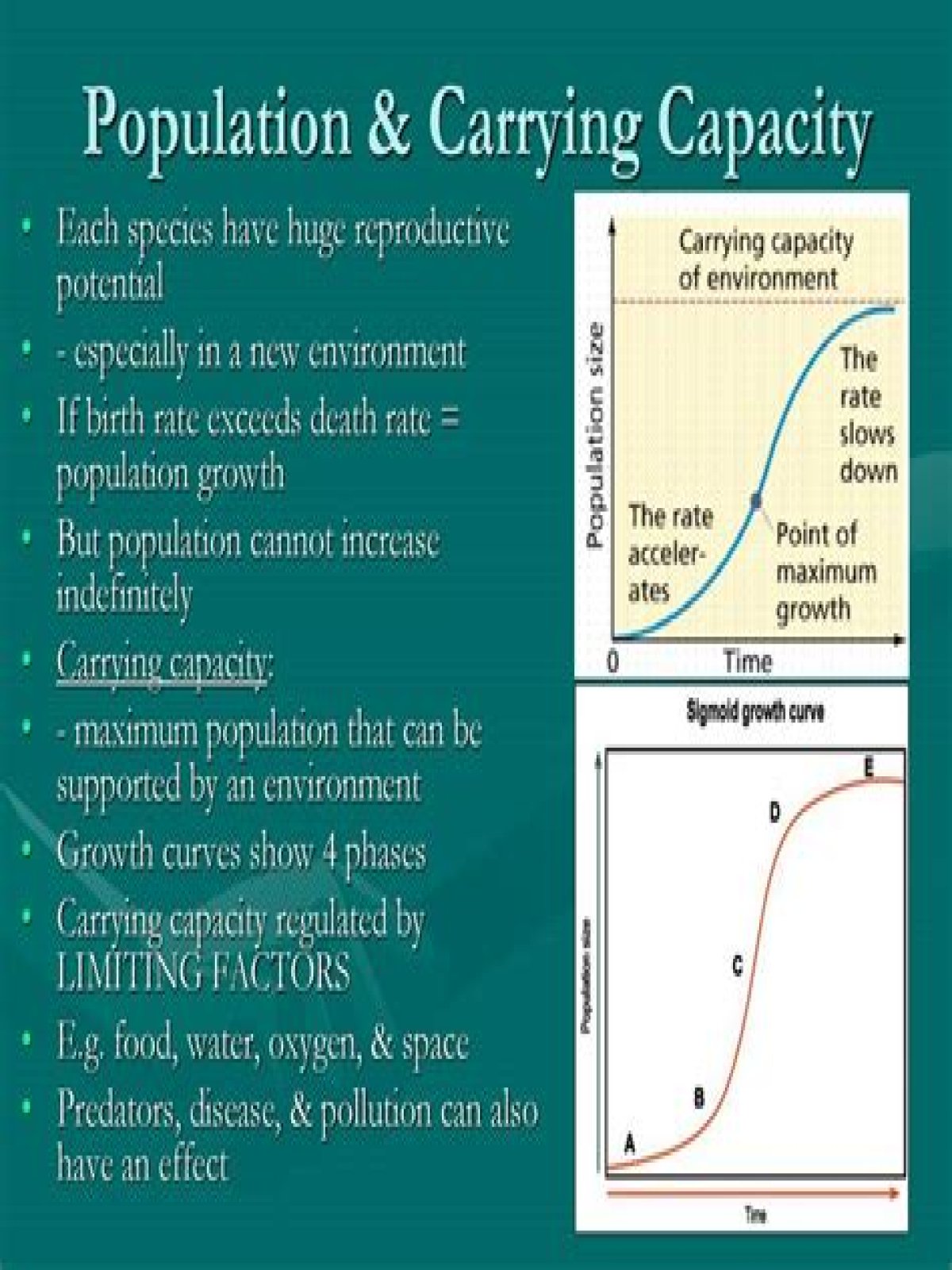- What is the relationship between competition?
- What factors keep populations from reaching their carrying capacity?
- What factors affect population growth?
- Which two factors can both cause a population to increase?
- What will happen if a population grows larger than the carrying capacity of the environment?
- How can carrying capacity be increased?
- Which statement is true about the relationship between carrying capacity and population size?
- Does a population always grow until it reaches carrying capacity?
- What happens when an environment has not reached its carrying capacity for a population?
- When a population is growing logistically At what stage is the change in population size over the change in time the greatest?
- What happens as n approaches K in logistic growth?
- What is population growth formula?
- What happens if you alter the R or K terms in the logistic growth model?
- What is the relationship between population density and population distribution?
- What are the similarities and differences between population density and population distribution?
- Related Articles
What is the relationship between competition?
Competition is a relationship between organisms that strive for the same resources in the same place. The resources might be food, water, or space. There are two different types of competition: Intraspecific competition occurs between members of the same species.
What factors keep populations from reaching their carrying capacity?
Abiotic vs. Biotic Limiting Factors
Abiotic factors are non-living physical and chemical elements in the ecosystem, such as sunlight, temperature, soil, water, and oxygen. Biotic factors are living or once-living organisms in the ecosystem, such as food, disease, competition, and predators.
What factors affect population growth?
The two main factors affecting population growth are the birth rate (b) and death rate (d). Population growth may also be affected by people coming into the population from somewhere else (immigration, i) or leaving the population for another area (emigration, e).
Which two factors can both cause a population to increase?
The two factors that increase the size of a population are natality, which is the number of individuals that are added to the population over a period of time due to reproduction, and immigration, which is the migration of an individual into a place.
What will happen if a population grows larger than the carrying capacity of the environment?
In a population at its carrying capacity, there are as many organisms of that species as the habitat can support. … If resources are being used faster than they are being replenished, then the species has exceeded its carrying capacity. If this occurs, the population will then decrease in size.
How can carrying capacity be increased?
The carrying capacity of an ecosystem can be increased by (obviously) expanding the size of the habitat, having essential resources like food and water more readily available to the organisms in that ecosystem, and/or eliminated limiting factors.
Which statement is true about the relationship between carrying capacity and population size?
Which statement is true about the relationship between carrying capacity and population size? A. If a population is more than the carrying capacity, it leads to a positive growth rate and increased population.
Does a population always grow until it reaches carrying capacity?
The population grows in size slowly when there are only a few individuals. Then the population grows faster when there are more individuals. … In logistic growth, a population will continue to grow until it reaches carrying capacity, which is the maximum number of individuals the environment can support.
What happens when an environment has not reached its carrying capacity for a population?
Carrying capacity can be defined as a species’ average population size in a particular habitat. The species population size is limited by environmental factors like adequate food, shelter, water, and mates. If these needs are not met, the population will decrease until the resource rebounds.
When a population is growing logistically At what stage is the change in population size over the change in time the greatest?
Malthus published a book in 1798 stating that populations with unlimited natural resources grow very rapidly, after which population growth decreases as resources become depleted. This accelerating pattern of increasing population size is called exponential growth.
What happens as n approaches K in logistic growth?
According to the logistic equation: a population will grow (r > 0) as long as N < K; As N approaches K, there is either a decrease in the instantaneous birth rate (b) or an increase in the instantaneous death rate (d), or both.
What is population growth formula?
We can write a simple equation to show population growth as: Change in Population Size = (Births + Immigration) – (Deaths + Emigration) Expressing Population Changes as a Percentage. Suppose we had a population of 100,000 individuals. Suppose in one year there were 1000 births, and 500 deaths.
What happens if you alter the R or K terms in the logistic growth model?
What happens if you alter the R or K terms in the logistic growth model? If you increase R and decrease K, the plateau comes sooner. On the other hand, if you decrease R and increase K, the plateau comes later.
What is the relationship between population density and population distribution?
However the two concepts are different, as distribution is based on location while density is a ratio. Population distribution denotes the spatial pattern due to dispersal of population, formation of agglomeration, linear spread etc. Population density is the ratio of people to physical space.
